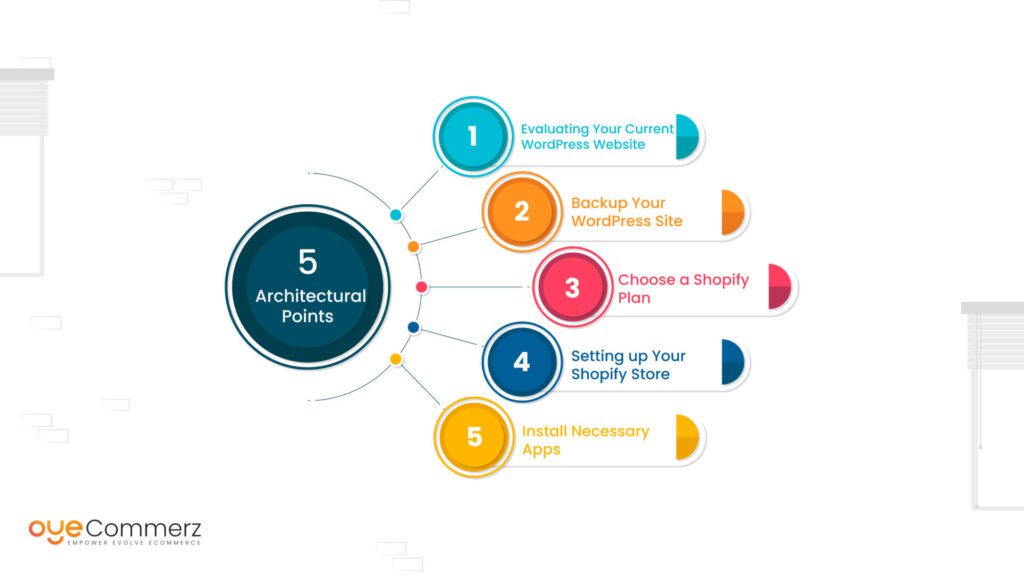Shifting from WordPress to Shopify marks an promising step toward streamlining your e-commerce processes. As businesses expand, selecting a platform that supports growth potential, user experience, and flexibility becomes crucial. Shopify has emerged as a preferred choice for online merchants, offering unmatched adaptability, security, and user-friendliness. In this guide, we will delve into why this migration is a game-changer, highlight the advantages, and provide practical tips to facilitate a smooth transition.
1. Top Reasons to Transition from WordPress to Shopify
WordPress, paired with WooCommerce, continues to support countless e-commerce platforms. Nevertheless, as companies scale, issues like reliance on plugins, security vulnerabilities, and technical complexities often obstruct progress. Shopify, designed explicitly for digital retail, addresses these issues with an comprehensive, user-friendly solution. Real data supports this shift—Shopify powers over 4.4 million stores worldwide, with a documented 10% increase in sales performance for numerous merchants post-switch.
2. Key Benefits of Shopify for E-commerce Success
Shopify’s robust ecosystem caters for scaling brands. Its standout benefits are:
- Seamless Customization: Shopify offers over 80 expertly crafted themes.
- Integrated Tools: Capabilities such as Shopify Payments and built-in SEO streamline operations.
- Global Reach: Currency versatility and localization features empower brands to expand internationally.
Additionally, Shopify boasts an availability percentage of 99.98%, guaranteeing your store remains accessible.
3. Preparing for WP to Shopify Migration
Prior to starting the migration process, assess your existing setup. Review product data, client information, and SEO performance. Tools like Shopify’s Migration Kit or third-party solutions can simplify this process. Develop a comprehensive plan, making sure all resources—product descriptions, images, and articles—are ready for seamless import.
4. Data Migration: A Critical Step
Transferring your data is a cornerstone of a smooth transition. When moving from WordPress to Shopify, prioritize:
- Product Information: SKU, item summaries, and groupings.
- Client Information: Emails, order history, and preferences.
- Search Engine Considerations: Preserve meta tags, URLs, and forwarding paths to maintain WordPress to Shopify migration search rankings.
Use tools such as LitExtension to facilitate seamless migration while reducing mistakes.
5. Customizing Your Shopify Store
Post-migration, customizing your Shopify store helps it aligns with your brand. Utilize Shopify’s drag-and-drop editor to design pages effortlessly. Shopify's themes are mobile-responsive, ensuring a smooth user experience across platforms—a key point, given 74% of e-commerce traffic is generated by mobile users.
6. How to Protect Your SEO Rankings When Switching Platforms
SEO is vital for maintaining your online presence during migration. Shopify Shopify vs WooCommerce pros and cons is highly optimized for search engines with organized link formatting, preloaded features, and smooth content management. Ensure:
- Set up URL forwarding for old URLs.
- Optimize new pages with targeted phrases.
- Leverage plugins like Plug in SEO to track analytics after the switch.
7. Post-Migration Testing
Once the migration is complete, conduct thorough testing.
Review: - Website speed (Shopify delivers faster speeds in contrast with WP).
- Payment integration reliability and checkout processes.
- Mobile responsiveness.
Testing ensures your store provides a seamless shopping experience from the start.
8. Real-Life Success Story
An example of effective platform switching is Gymshark, a fitness apparel brand that transitioned to Shopify. After the switch, the company experienced a 60% increase in mobile sales and significantly lowered site downtime. This showcases the potential of Shopify in driving e-commerce growth.
9. Overcoming Common Migration Issues
Migration comes with challenges, such as data integrity and reconfiguring custom functionalities. However, Shopify’s robust support and external professionals make overcoming these hurdles manageable. Partnering with qualified Shopify developers helps guarantee a trouble-free transition.
10. Making the Switch: The First Step Toward Success
Migrating from WP to Shopify marks a forward-thinking approach to e-commerce. By focusing on growth, streamlining operations, and improving buyer satisfaction, Shopify empowers businesses to succeed in challenging industries.
Conclusion
Switching from WordPress to Shopify offers a smart solution that can significantly boost your e-commerce success. With a well-structured strategy, the right tools, and professional guidance, you can achieve new growth opportunities.
Excited to start the journey? Reach out today to learn how our Shopify migration services can transform your online store. Get in touch today, or ask yourself: Can your business afford to miss out on Shopify’s growth potential?
